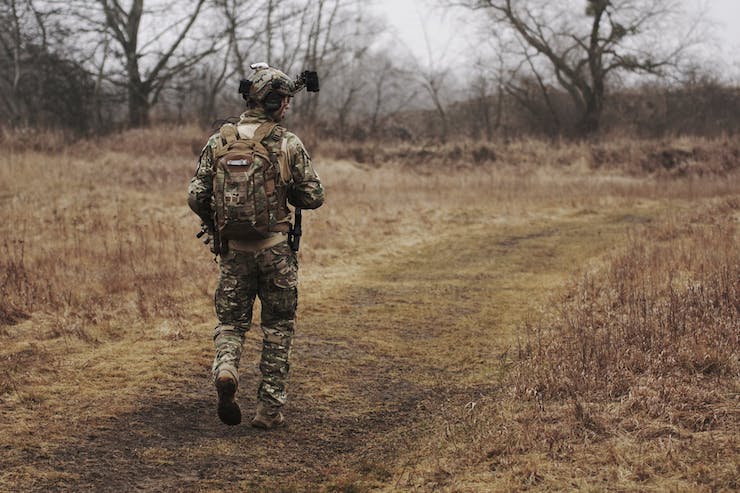Military Looking For Ways to Combat Drones Flying In Restricted Areas

Today almost anyone can have access to a quality drone. From easy to build hobby kits to high quality commercial and personal drones, there are drones available within every price range. They can be found in toy and craft stores, pharmacy and grocery stores, countless online retailers, even in small convenience stores. For the majority of the world this is great! It puts an amazing tool into the hands of anyone who wants to learn and play with an emerging technology. But there are always those who will take advantage of technologies, using them for nefarious means.
When drones were first being used they were primarily tools to be used by the government and military. Today these organizations are still the largest supporters of drone technology. Military groups use a wide range of drones daily for countless missions. Just as they are using drones for reconnaissance, defense, and offense, so are their enemies. Because drones are so easy for anyone to get a hold of, they have become key tools to those trying to spy on governments or carry out acts of terrorism.
In response to those using drones like this, governments have had to invest huge amounts of money into anti drone defenses. For a long time that simply meant having to visually confirm and shoot down a drone, a technique that almost always proved to be too little to late. In 2016, police in the Netherlands began using trained birds of prey to capture drones that were flying into restricted areas. Though it was a creative idea, it was not the most effective method. The idea of capturing drones though was a good idea because it would allow for the drone’s place of origin to possibly be located.
The US Department of Defense is reportedly spending millions on a system to capture illegal drones. The system has been created by Fortem and is called Drone Hunter. It is a large drone that acts as a rogue drone interceptor. The Drone Hunter is an AI enabled system that can detect unauthorized drones in the air. Once detected, the airborne device shoots out a giant net that captures the unwanted drone in the air. Once captured, Drone Hunter will return to the ground where the drone can then be identified and an investigation can commence. One of the good things about this system is that it can eliminate illegal drones while maintaining safe conditions for people and property on the ground. However, the Drone Hunter has some draw backs as well.
The first problem is that it is possible for a pilot to evade capture from the Drone Hunter’s net if they are operating a drone within visual line of sight. If the Drone Hunter’s net fails to capture the drone on the first try, that’s it. A second Drone Hunter system is needed, or the net needs to be reset. They other main flaw is that often times there will be more than one illegal drone in the air. With the advancement of technology now a single pilot can operate a swarm of drones, well out of the range of capture for the Drone Hunter.
An Israeli technology defense company has come up with a alternate solution for stopping illegal drones, whether it be a single drone or a swarm of drones. Based out of Haifa, Rafael Advanced Defense Systems (RADS) develops and produces weapons and military defense technologies for the Israeli Defense Forces. The technologies that they develop are also made available to the IDF’s allies. One of their latest defensive models is called the Drone Guard. It is a system that is highly portable as it is mounted onto the roof of a vehicle. The system is able to detect any type of drone, even micro drones, in the air as far as 2.1miles away. It is able to classify the drone’s specific system and transmission. It then uses a laser to literally fry the invasive drones out of the sky.
The Drone Guard is similar to a system developed by the US military called Phaser. However, the massive Phaser unit is being used only for military missions while hundreds of Drone Guard systems have been sold to airports around the world to increase security. Israel Aerospace Industries (IAI) and ELTA Systems were the coordinating services behind RADS’s development of Drone Guard. IAI vice president and ELTA CEO Yoav Tourgeman said, “We are proud to provide the Drone Guard system to some of the main airports around the world. Since the Drone Guard is lightweight, transportable and easy to set up, we have been able to meet these demands with an excellent level of performance. In September, we participated in the REP(MUS) 19 NATO exercise in Portugal, where we successfully demonstrated the Drone Guard’s ability to protect harbors against hostile drones, UASs, USVs and other airborne and surface threats.”
Drones aren’t going away anytime soon, and that’s great news. The world benefits from drones on so many levels. The ways in which drones are being used to help and entertain people are constantly progressing. While it is important for drone technology to continue growing and be accessible to the public, it is equally important that there are systems in place that can successfully protect us from drones as well.
|